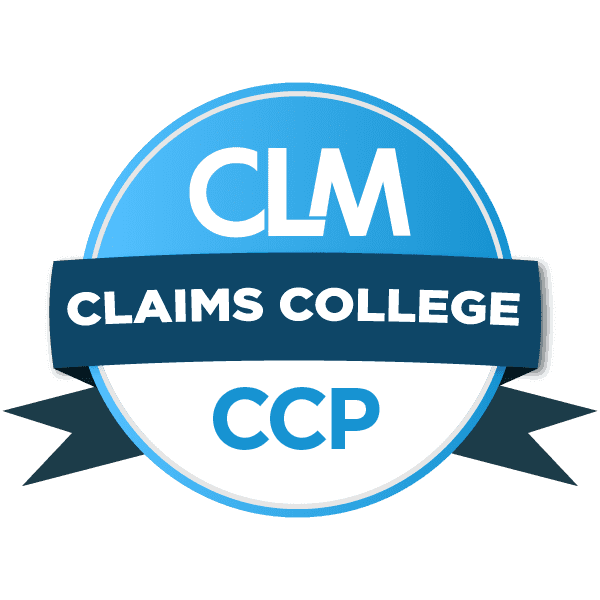
Additional Insurance Coverage in Arizona
Submitted by Richard L. Righi
Arizona law is beginning to catch up with 10 years of construction defect litigation. This article provides some background in the recent development of Arizona authority relating to additional insurance coverage.
Coverage Under a Blanket AI Endorsement
Of interest to those concerned about additional insurance coverage is the discussion in Lennar concerning the UNIC blanket additional insured endorsement. UNIC issued a blanket endorsement on one of the involved subcontractor policies (Wheeler Construction). Lennar contended the blanket endorsement provided coverage to Lennar when read together with the subcontract. The Court, however, denied coverage to Lennar through the Wheeler AI endorsement because the subcontract, while requiring Wheeler to insure Lennar, did not specifically require Wheeler to provide AI coverage. And Wheeler's obligation to "indemnify" Lennar in the subcontract was not sufficient to establish an obligation by Wheeler's insurer to provide a defense.
The Court appeared to require one of two things by a claimed insured to establish an obligation on the part of an AI carrier in the event of a blanket endorsement: either 1) an AI endorsement in favor of the developer/GC; or, 2) a blanket AI endorsement and a specific requirement by the insured sub-trade to provide AI coverage to the developer/GC. Obviously, the language of the subcontract is critical in the absence of an endorsement specifically covering the project.
The Duty to Defend the Additional Insured
The obligation of an insurer to defend an "additional" named insured, once established, is the same as the obligation to defend a "primary" named insured. The term "additional insured" is actually a misnomer as it applies to the duty to defend. On the other hand, an insurer's duty to indemnify may be more greatly restricted by an AI endorsement than the general insuring agreement.
Generally, an insurer is required to defend an insured in Arizona at the earliest stages of litigation, even if the claims against an insured are groundless, and regardless if the insured is found liable. Paulin v. Fireman's Fund Insurance Co., 1 Ariz.App. 408, 403 P.2d 555 (1965); INA Insurance Co. v. Valley Forge Ins. Co., 150 Ariz. 248, 722 P.2d 975 (App.1986). The duty extends to covered and non-covered claims. Western Casualty & Surety Co. v. International Spas of Arizona, Inc., 130 Ariz. 76, 634 P.2d 3 (App. 1981).
Typically, an insurer is not required to defend until it receives a complaint filed against an insured. Manny v. Estate of Anderson, 117 Ariz. 548, 574 P.2d 36 (App. 1977). Obviously, most typical CGL policies that follow the ISO standard form require a defense to a Demand for Arbitration, which is included in the definition of "suit."[1] However, in Arizona, under the more recently adopted purchaser dwelling act, an insurer must treat a notice of defects received by a seller (insured) pursuant to the statute as a notice of claim. ARS 12-1362(B).
Notwithstanding this directive, the duty to defend is not absolute and will depend upon the actual facts rather than upon the allegations of the complaint. Generally, if the complaint, on its face, alleges facts which come within the coverage of the policy, the insurer is required to defend. If the alleged facts fail to bring the case within the policy coverage, the insurer is free of such obligation. If the alleged facts ostensibly bring the case within the policy coverage, but other facts which are not reflected in the complaint take the case outside the policy coverage, there is no duty to defend. See Kepner v. Western Fire Insurance Co., 109 Ariz. 329, 509 P.2d 222 (1973); Granite State Insurance Corp. v. Mountain States Telephone & Telegraph Co., 117 Ariz. 432, 573 P.2d 506 (App. 1977) and Salvatierra v. National Indemnity Co., 133 Ariz. 16, 648 P.2d 131 (App. 1982). An insured is required to give its insurer notice of any amended pleadings which would impose a duty to defend. See, Salvatierra, supra.
An insurer may initially rely on the allegations of a complaint to determine whether it owes a defense. It may not rely on that determination, without investigating the facts, if the insured comes forward and makes some factual showing that the suit is actually one for damages resulting from events that do fall within the policy terms. See Advance Roofing, and Lennar, supra.
If any claim alleged in the complaint is within the policy's coverage, the insurer has a duty to defend the entire suit, because it is impossible to determine the basis on which the plaintiff will recover (if any) until the action is completed. Western Casualty & Surety Co. v. International Spas of Arizona, Inc., 130 Ariz. 76, 634 P.2d 3 (App. 1981); Lennar, supra.
In California, the issue of the extent of an AI carrier's obligation to defend an additional insured has been established for a decade. See, Maryland Casualty Co. v. Nationwide Insurance Co., 65 Cal.App.4th 21 (1998).
Arizona has now officially followed suit. In the recent case of Regal Homes, Inc. v. C.N.A. Insurance, 171 P.3d 610, 217 Ariz. 159, 518 Ariz. Adv. Rep. 18,Division One of the Arizona Court of Appeals applied long standing coverage principles to a case involving additional insurance in the construction defect context. The Court held that, among other things, an insurer owes the duty to defend the entire suit on behalf of its additional insured.
Regal was the builder of a residential community known as "The Shores." Regal obtained primary coverage from Auto Owners for one year (1995) and Zurich for three additional, successive years (1996-1998). Regal hired GMS concrete, which provided additional insurance to Regal through CNA for simultaneous policy periods (1995 - 1998). Two separate lawsuits were filed by two groups of homeowners. The first settled with payments by Regal, Auto Owners and Zurich totaling 2.4 million (neither Auto Owners nor Zurich exhausted their respective policies). The second went to trial and resulted in an award against Regal, and a determination that GMS was not at fault.
CNA did not participate in either case despite tenders of defense to the company.
The Regal Court first noted that the judgment in favor of GMS established for purposes of appeal the absence of fault and/or proximate cause on the part of GMS.
In the appeal, Auto Owners sought to establish, among other things, that CNA owed a defense and indemnity to Regal. In support of its defense, CNA argued that because GMS was found to be free of fault for the allegations levied against Regal in the second case, it did not owe a defense or indemnity to Regal through its AI endorsement in the first case. CNA based its argument on the absence of causal connection between GMS' work and Regal's liability.
The endorsement at issue contained commonly found language providing that Regal was "an additional insured only with respect to liability arising out of GMS' work for Regal." The Court noted that "the commonly understood meaning of the words "arising out of" requires only some causal relationship between the injury and the risk for which coverage was provided." The Court held, as a result, that the determination of no fault or liability on the part of GMS did not end the inquiry, because the causal connection necessary to satisfy the "arising out of" requirement is less than that required for proximate cause. The Court remanded the case with further instructions, namely, that "the question whether the alleged liability of Regal arose out of GMS' work must be determined initially from the allegations in the complaint against Regal and the facts known at that time."
The Court indicated that "it is possible the requisite nexus (arising out of) could be established for the duty to defend but not for the duty to indemnify." In essence, then, if the facts known at the time the complaint was filed established some causal relationship between GMS' work and Regal's liability, CNA would be responsible for the defense of Regal, regardless that GMS was ultimately found free of fault by a trier of fact.
The Court determined that, due to a factual finding, the CNA endorsement did not require primary coverage as applied to the Auto Owners policy, which was held to be primary for its policy term. However, the Court found the CNA policy was primary as applied to the Zurich policy because the "other insurance" clauses of each were mutually repugnant. In that instance, the Court held, both policies are primary.[2]
With this background in mind, the Court held that because each of the three insurers were primary, and because Regal alleged the occurrence of damages within each of the four successive policy periods, each policy was triggered, and therefore, each insurer had an equal obligation to defend the underlying case. The Court specifically held that regardless of the number of policy periods insured by the involved carriers, each owed a duty to defend the entire case. This ruling applied equally to both direct and additional insurers.
Allocation of Damages Given Multiple Policies
The 86,000 dollar question still persists in Arizona.
The Regal Court provided some guidance. The Court remanded the case to the trial court for a determination of allocation of defense costs amongst the participating carriers under the theory of equitable subrogation. The Court made it clear that the insurer requesting reimbursement under an equitable subrogation theory must prove it paid more than its "fair share" in defense costs. Although the Court declined to determine the appropriate method to allocate such costs, it referred the parties to the discussion of six acceptable methods in Centennial Ins. Co. v. U.S. Fire Ins. Co., 105 Cal.Rptr.2d 559, 562-64 (Cal. Ct. App. 2001)(equal shares; time on risk; policy limits; combined policy limit - time on risk; premiums paid; and maximum loss).
Some guidance can be gleaned from cases involving indemnity allocations to sub-trades. It should be noted here that in Arizona, an expert witness cannot be utilized to apportion percentages of fault for a jury; such testimony constitutes inadmissible legal conclusions under Rule 704, Ariz.R.Evid. Webb v. Omni Block, 166 P.3d 140, 216 Ariz. 349, 512 Ariz.Adv.Rep.28. However, when considering an appropriate method to allocate damages amongst sub-trades, at least one Court has suggested comparison of costs to repair. See, Mark Hancock Development v. Atrium Door & Window Company, et. al., (memorandum decision - 1 CA-CV 05-0789)(if the trial court engages in any comparisons to make the allocations, it will be comparisons of costs to repair, not of degrees of negligence). Obviously, expert opinions regarding percentage of fault of sub-trades can be helpful, even necessary, to resolve issues of allocation where more than one sub-trade can be blamed, because to some extent repair costs will overlap. But because the cost of repair attributed to each sub-trade appears to be the accepted valuation, focusing allocations on actual repair costs associated with the work of the particular sub-trades seems the most appropriate method for indemnity allocations in Arizona.
[1] In 2007, the Arizona Court of Appeals confirmed the broad reach of arbitration provisions when it bound a subcontractor to arbitrate a dispute despite the lack of a specific arbitration provision in the operative subcontract. It was sufficient that the subcontract incorporated the general conditions of the prime contract, and the general conditions incorporated the arbitration provision of the prime contract. Weatherguard v. d.r.Ward, 214 Ariz. 344, 152 P.3d 1227 (App.2007).
[2] The Court reached this decision even though Zurich was not a party; the determination was necessary to complete the analysis of AI coverage for Regal.

A member of our team will be in touch shortly to confirm your contact details or address questions you may have.



Stay In The Know
-
 Read More
Read More -
 Read More
Read More -
 Read More
Read More








